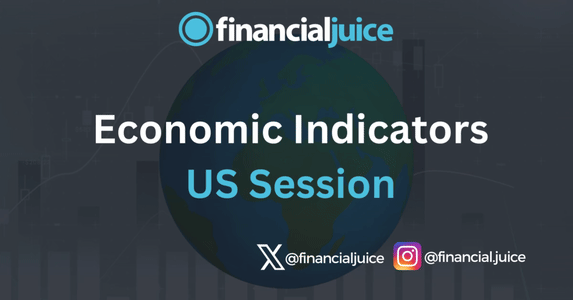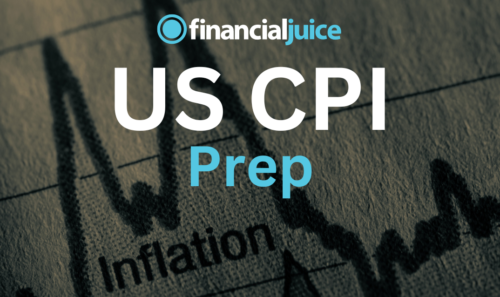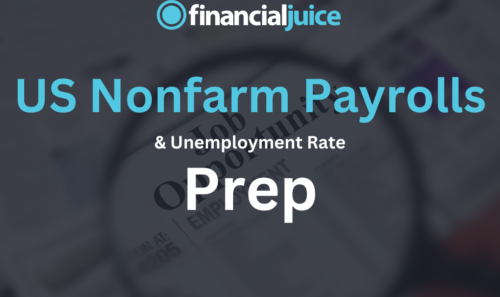
Week Ahead: Economic Indicators (US)
Hey, Traders!
For the August 5th week, here is a list of all of the major economic indicators being released during the US Session, with a brief synopsis of what they represent and what to possibly expect from the markets in reaction.
Monday 5th August
09:45 ET
US S&P Services PMI July Final
The US S&P Services PMI is a monthly economic indicator compiled by S&P Global that measures the activity level of purchasing managers in the US services sector.
It evaluates various factors such as new business, employment, business expectations, and input prices.
As a diffusion index, a reading above 50 indicates expansion in the services sector, while a reading below 50 signals contraction.
This index provides insights into the health and performance of the services industry, which is a significant part of the US economy.
What to Expect
The service sector for the US has been noted as a headwind for inflation’s return to the 2% target, as Service PMI reads have remained mostly in expansionary territory (above 50) since the Fed started its tightening phase.
This means a lower-than-expected Services PMI is likely to be seen as bullish for US equities and bearish for the dollar, as it would be seen as a potential downside catalyst for inflation, as traders begin to solidify/increase bets on Fed rate cuts this year.
The opposite is also true.
However, with a potential economic downturn now in focus, investors will have to balance the risk between changes in monetary policy, and effects on corporate profits when reacting to this data point, which could add a level of unpredictability/volatility as traders parse this information in different ways.
10:00 ET
US ISM Services PMI for July
The US ISM Services PMI is a monthly economic indicator published by the Institute for Supply Management that measures the activity level of purchasing managers in the services sector.
It assesses components such as business activity, new orders, employment, and supplier deliveries.
As a diffusion index, a reading above 50 indicates expansion, while a reading below 50 signals contraction.
This index helps gauge the health of the services industry, which constitutes a major portion of the US economy and provides insights into broader economic conditions.
What to Expect
(Same as S&P Services PMI, though more weight is given to the ISM report, due to the larger size of the companies within the survey respondents.)
Differences between the US S&P & ISM Services PMIs
Survey Population:
ISM Services PMI: Surveys a broad range of industries with a focus on larger companies.
S&P Services PMI: Surveys a more extensive range of company sizes, including more small and medium-sized enterprises.
Components and Weighting:
ISM Services PMI: Measures business activity, new orders, employment, and supplier deliveries, using equal weighting for these components.
S&P Services PMI: Assesses new business, business expectations, employment, and input prices, with different weightings that might emphasize certain aspects like new orders and business expectations more heavily.
Focus Areas:
ISM Services PMI: Tends to focus on business activity and supplier delivery times, reflecting conditions such as supply chain performance.
S&P Services PMI: May place more emphasis on future business expectations and input price trends, providing a forward-looking perspective on inflationary pressures and business outlook.
These methodological differences can result in variations between the indices, offering complementary perspectives on the health and trends of the services sector.
Tuesday 6th August
08:30 ET
US Trade Balance for June
The US Trade Balance measures the difference between the value of the country’s exports and imports of goods and services over a specific period.
A positive trade balance (trade surplus) occurs when exports exceed imports, while a negative trade balance (trade deficit) occurs when imports exceed exports.
Reported monthly by the Bureau of Economic Analysis (BEA), this indicator provides insights into the economic health, competitiveness, and demand for US goods and services internationally.
What to Expect
It is quite uncommon for the markets to react to this data point.
As a large importing country, the US has been in a consistent trade deficit since 1975, though the markets may react to a much larger-than-expected deviation, as this can affect GDP.
A deeper than expected trade deficit (lower than expected number) could negatively affect GDP, which could be seen as bearish for stocks and the dollar, whereas a higher than expected number could be seen as positive for US GDP, and bullish for US equities and the dollar.
Wednesday 7th August
10:30 ET
US Weekly EIA Crude Oil Inventories
The US Weekly EIA Crude Oil Inventories report, released by the Energy Information Administration every Wednesday, details the amount of crude oil held in storage across the United States.
This data provides insights into supply and demand dynamics in the oil market.
What to Expect
An increase in inventories suggests higher supply or lower demand, which can lead to lower oil prices.
Conversely, a decrease indicates lower supply or higher demand, potentially raising oil prices.
Thursday 8th August
08:30 ET
US Weekly Initial & Continued Jobless Claims
The US Weekly Initial & Continued Jobless Claims report, released by the Department of Labor every Thursday, tracks the number of people filing for unemployment benefits.
Initial jobless claims count those filing for the first time, providing a gauge of new unemployment.
Continued jobless claims count those still receiving benefits after their initial claim, indicating ongoing unemployment levels. High numbers suggest a weakening job market, while low numbers indicate strength.
What to Expect
This report may draw investor attention, as the FOMC has been paying particular attention to employment in its recent rhetoric, noting that an unexpected weakening in the jobs market may warrant a policy response.
This implies that a higher-than-expected jobless claims number could increase bets on Fed rate cuts, as the Fed focuses on the employment side of their dual mandate, and seeks to cut interest rates to stop the job market from becoming too weak.
Normally, the equity markets would have reacted positively to increased rate cut bets, however, recently the markets have been reacting negatively all around to rising bets on rate cuts, as they imply that the Fed may be too late in cutting rates to stop an unwarranted economic slowdown.
So it could be likely that higher than expected jobless claims would cause weakness across US assets (stocks, dollar and government bond yields)
Friday 9th August
08:30 ET
Canadian Employment Change
Canadian Employment Change is a monthly economic indicator that measures the net change in the number of employed people in Canada over the previous month.
Reported by Statistics Canada, it includes both full-time and part-time employment.
This data provides insights into the labor market’s health and overall economic conditions.
An increase in employment suggests economic growth and confidence, while a decrease may indicate economic challenges.
Canadian Unemployment Rate
The Canadian Unemployment Rate is a monthly economic indicator reported by Statistics Canada that measures the percentage of the labor force that is unemployed and actively seeking work.
It is calculated by dividing the number of unemployed individuals by the total labor force and multiplying by 100.
This rate provides insights into the health of the labor market and overall economic conditions.
A decreasing unemployment rate indicates an improving job market and economic growth, while an increasing rate suggests economic challenges and potential slowdowns.
What to Expect
For the BoC to continue cutting interest rates, they would want to see evidence that employment needs stimualtion.
This means that if the unemployment rate was higher, and the employment change was lower, that would likely cause weakness in CAD and strength in Canadian equities, as this could bolster bets for more BoC rate cuts.
The opposite is also true. If the unemployment comes in lower, and the employment change comes in higher, then this could strengthen the case for the BoC to hold rates unchanged at their next meeting, the repricing of this could cause CAD strength and Canadian equity weakness.





